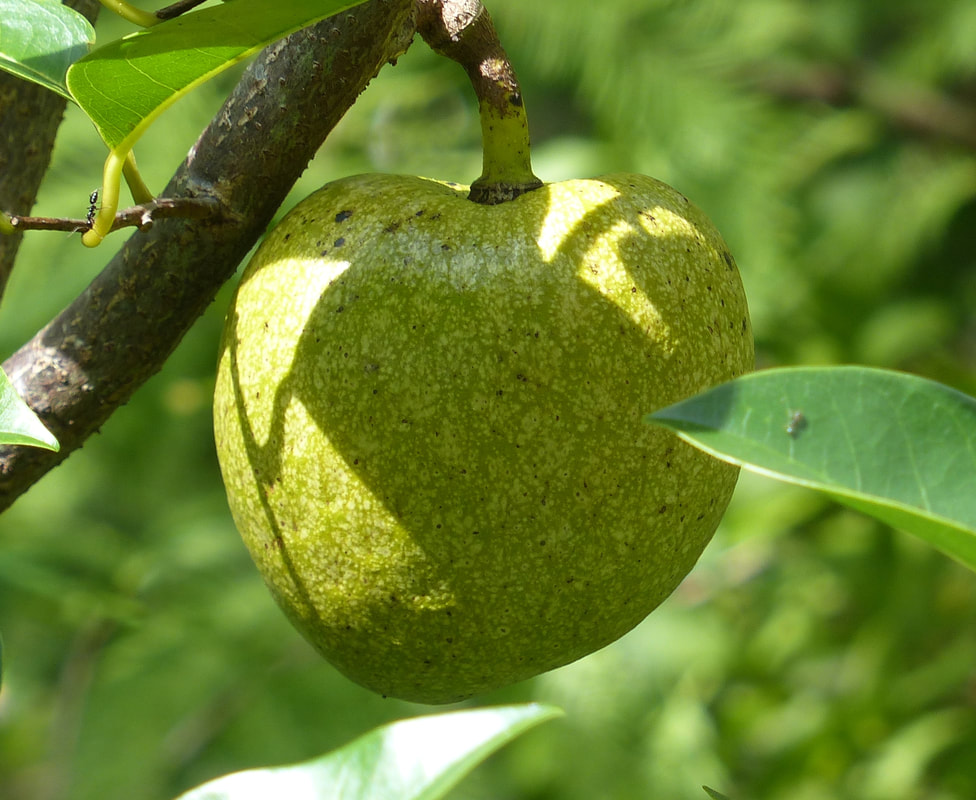Pond Apple
Annona glabra
Annona glabra
|
This month, I wanted to touch on pond apple. As an avid fruit tree lover and permaculturalist, the Annona genus is one of my favorites, due to its wide range of tasty fruit. Pond apple is our native Annona and since it's almost the season for it, let's talk about it!
Despite the majority of the Annona genus being fairly tasty, pond apple is kind of an outlier. The iconic fruit is well loved by native fauna, but not so much by us humans. That being said, it still has tons of cultural significance and plays an important role in many ecosystems. Pond apple is native to the swamps of southern Florida. It is a semi-deciduous tree that grows 50 to 60 feet tall and 15 to 20 feet wide. The blooms of this species can be seen in late spring and are characterized by their dense, cream colored petals and rich, red interior. The leaves are rather waxy and have well-defined venation. Like mentioned before, A. glabra naturally occurs in the swamp, so this tree prefers wet, inundated soils and rather shady conditions. If kept exposed to the sun, make sure they have plenty of irrigation. Historically, pond apple were used to create custards and jams, and the seeds to make a cleaning product (they are said to be toxic). Nowadays, pond apple is rarely used in a landscaping setting. Left uncontrolled, the seeds spread easily and it is common to see lots of saplings appear near the mother tree. The plant is highly invasive in Australia. If your yard looks more like a mature forest than something manicured, you shouldn't have as much of a problem. Pond apple also grows much small in a yard, as it doesn't have to reach for sunlight through the canopy. The winner of this year's WETPLAN competition had many lining their pond, which was lovely to see in an HOA. Hopefully, this becomes the norm in our near future. By: Maya Frere |

